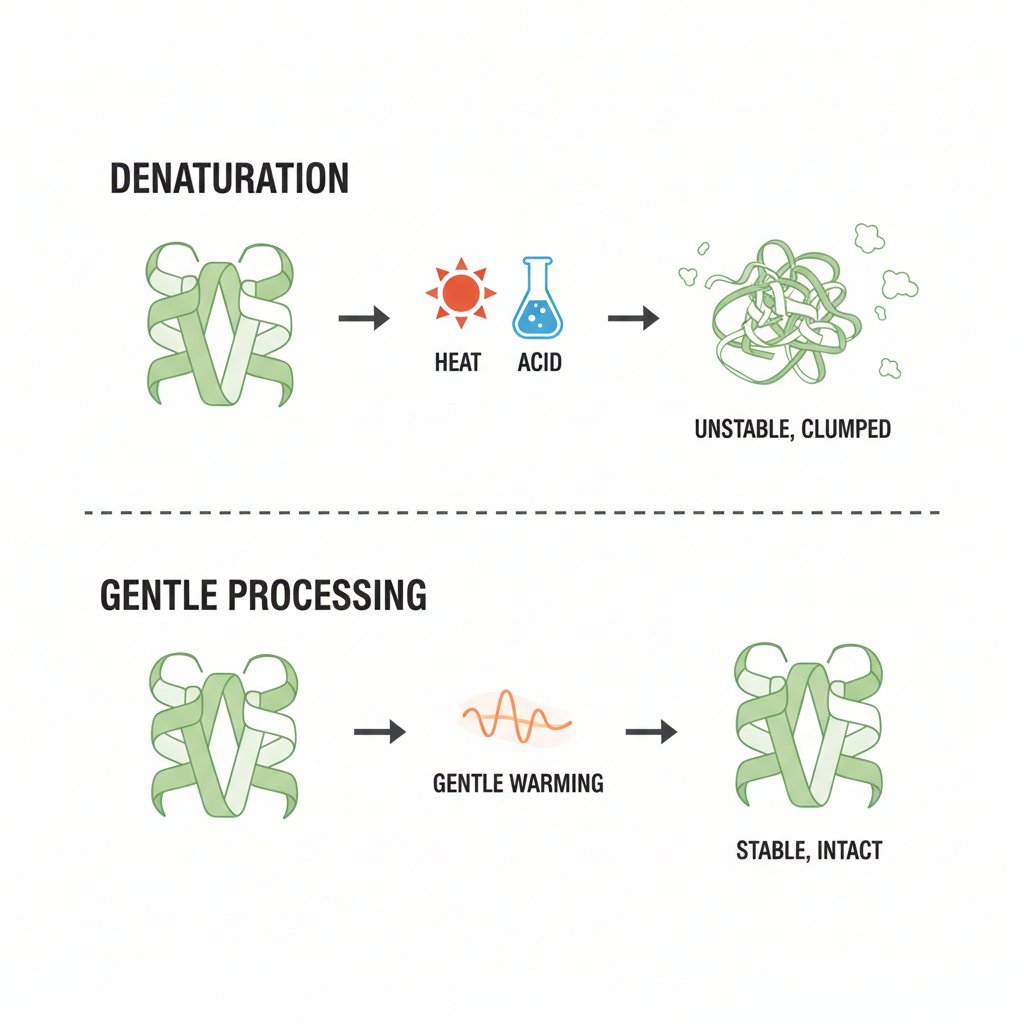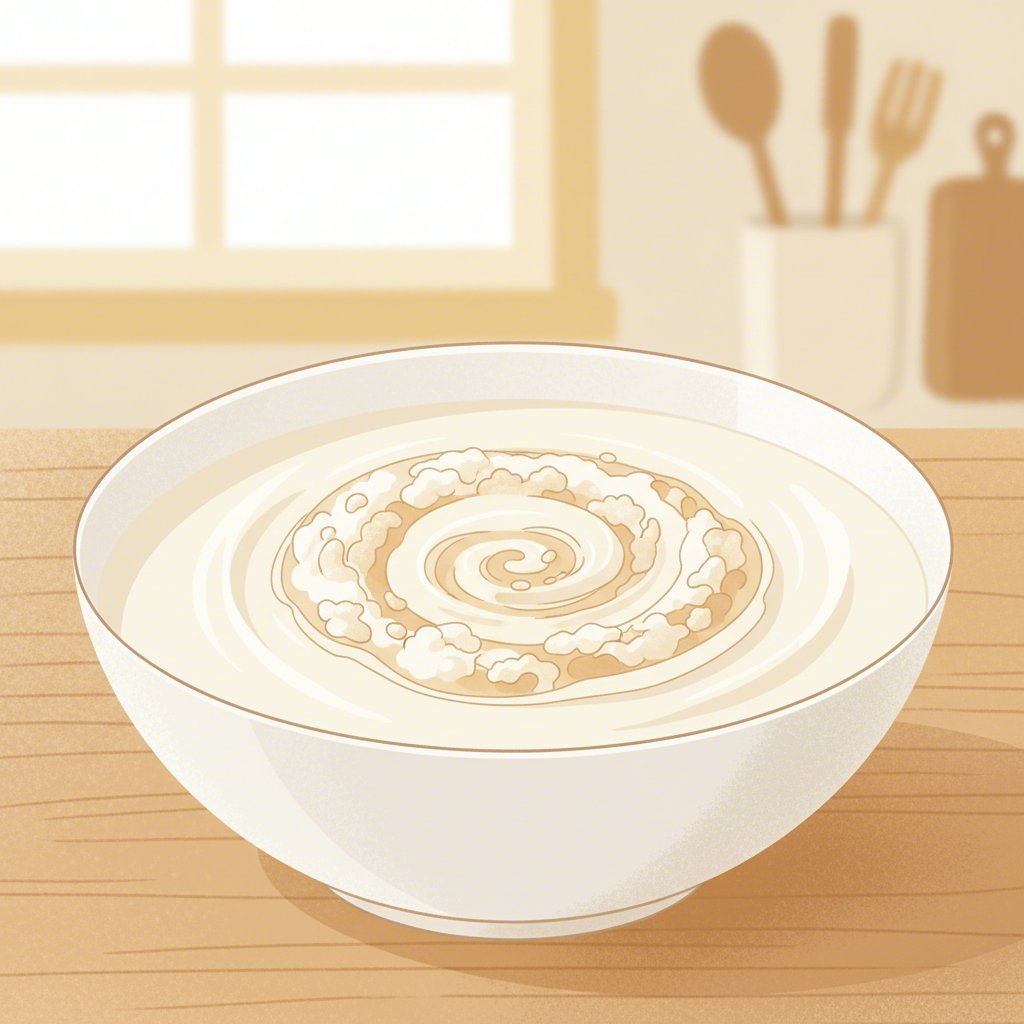TL;DR
Soy milk curdles in soup because its proteins are sensitive to sudden changes in temperature and high levels of acidity. When cold soy milk hits a hot, acidic soup base (containing ingredients like tomatoes or lemon), its proteins clump together, creating an unappealing, grainy texture. To prevent this, you should warm the soy milk gently before adding it—a technique called tempering—and stir it into the soup at the very end of the cooking process, preferably with the heat turned off.
The Science Behind Curdled Soy Milk: Why It Happens
That moment of disappointment when you pour creamy soy milk into your beautiful soup, only to see it break into unappetizing little clumps, is a common frustration. This process, known as curdling, is a chemical reaction. Understanding why it happens is the first step to preventing it. The primary culprits are the twin forces of heat and acid, which work together to destabilize the proteins in the soy milk.
Soy milk is an emulsion of protein and fat suspended in water. These proteins hold their shape under normal conditions, but they are sensitive. When you introduce a significant shock—like pouring cold milk into a simmering pot of soup—the drastic temperature change causes the proteins to denature, or unravel. As they unravel, they cling to each other, forming the visible curds that ruin your soup’s texture.
Acidity is the other major factor. Many popular soup recipes contain acidic ingredients like tomatoes, lemon juice, vinegar, or wine. These ingredients lower the pH of the soup, creating an acidic environment that further encourages the soy proteins to coagulate. The combination of high heat and high acidity is the perfect storm for curdling. This is why a creamy tomato soup is often more challenging to make with soy milk than a less acidic mushroom or potato soup.
A common question is whether it’s safe to eat soup with curdled soy milk. As long as the soy milk wasn’t spoiled to begin with, the curdled result is perfectly safe to consume. The issue is purely textural, not a matter of food safety. However, since the goal is a smooth, creamy soup, preventing the curdling is key. According to an article from Tasting Table, while curdled soy milk is edible, it can seriously alter the texture and consistency of your dish.
Mastering the Method: 5 Foolproof Techniques to Prevent Curdling
Now that you understand the science, you can take control in the kitchen. Preventing soy milk from curdling is all about managing temperature and acidity with careful technique. These five methods are trusted by chefs and home cooks to achieve silky, stable, and delicious plant-based soups every time.
- Temper the Soy Milk: This is the most effective technique. Instead of adding cold milk directly to the hot soup, you gradually acclimate it. Place your soy milk in a separate bowl. Slowly whisk in a ladleful of the hot soup broth into the milk. Repeat this two or three more times. This gently raises the milk’s temperature without shocking the proteins. You can then pour the warmed milk mixture back into the main pot.
- Heat the Milk Gently and Separately: If you’re not in a rush, you can warm the soy milk in a separate saucepan over low heat. Don’t let it boil—you just want to bring it up to a warm, steamy temperature. Once warmed, you can add it to your soup pot, confident that the temperature difference isn’t extreme enough to cause curdling.
- Add Soy Milk Last, Off the Heat: One of the easiest methods is to simply finish your soup first. Once it’s cooked and you’re happy with the flavor, turn off the burner. Let the soup cool for a minute or two, then slowly stir in the soy milk. The residual heat will be enough to incorporate it without causing it to separate.
- Stabilize with a Starch: A starch can act as a protective buffer for the soy proteins. Before adding the soy milk, create a slurry by mixing a tablespoon of cornstarch or flour with a few tablespoons of cold water or soy milk until smooth. Stir this slurry into your soup and let it simmer for a minute to thicken. The starch molecules will help prevent the soy proteins from clumping together when you add the rest of the milk.
- Mind the Acidity: If your recipe is high in acid, add those ingredients strategically. Stir in any lemon juice, vinegar, or wine at the very end of cooking, after you’ve already incorporated the soy milk. This gives the milk a chance to integrate into the soup before being hit with a strong dose of acid.
To help you decide which method to use, here’s a quick comparison of two of the most popular techniques:
| Technique | Pros | Cons |
|---|---|---|
| Tempering | Highly effective for preventing shock; integrates milk smoothly. | Requires an extra bowl and a few extra minutes of active work. |
| Starch Stabilizer | Adds slight thickness to the soup; provides excellent protection. | Can slightly alter the final texture; must be mixed well to avoid lumps. |
Choosing the Right Ingredients: Does Your Soy Milk Brand and Soup Recipe Matter?
Success in the kitchen often starts at the grocery store. The specific type of soy milk you choose and the ingredients in your soup recipe can have a significant impact on whether you end up with a creamy delight or a curdled mess. Not all soy milks are created equal when it comes to cooking.
Commercial soy milks often contain stabilizers and emulsifiers like gellan gum or carrageenan. While some people prefer to avoid additives, these ingredients are included specifically to improve stability and prevent separation, making these brands more forgiving in hot or acidic dishes. Higher-fat and higher-protein soy milks also tend to be more robust. When in doubt, check the nutrition label; a richer, less watery soy milk is generally a better choice for cooking. Always opt for plain, unsweetened varieties for savory recipes to avoid adding unwanted sweetness or vanilla flavor to your soup.
For those who prefer to avoid additives or enjoy the fresh taste of homemade plant-based milks, making your own is a fantastic option. When you control the ingredients, you know exactly what’s in your milk. If you’re looking to craft fresh, additive-free plant-based milks right in your kitchen, resources are available to help. For instance, Soy Milk Quick offers an expert guide to the best plant milk makers, with detailed comparisons to help you find the perfect machine for delicious homemade almond, oat, or soy milk. Just remember that natural, homemade soy milk may be more delicate, so using the techniques described above becomes even more important.
Your soup’s composition also plays a critical role. Recipes built around highly acidic bases, like a classic tomato soup or a lemon-infused broth, are inherently riskier. In contrast, recipes centered on neutral or starchy vegetables like potatoes, mushrooms, squash, or carrots provide a much more stable environment for soy milk.
Before you start cooking, use this simple checklist to set yourself up for success:
- Check soy milk ingredients: Does it contain stabilizers? Is it unsweetened? A richer, stabilized milk is a safer bet for tricky recipes.
- Assess your soup’s acidity: Identify acidic ingredients like tomatoes, lemon, or vinegar and plan to add them last.
- Have a plan: Decide which prevention technique (tempering, adding off-heat, etc.) you will use before you begin.

Frequently Asked Questions
1. Is it safe to eat curdled soy milk?
Yes, it is perfectly safe to eat curdled soy milk as long as the milk itself has not spoiled. The curdling is a change in the food’s texture, not a sign of spoilage or bacterial contamination. While the grainy consistency can be unpleasant in a dish that’s meant to be smooth, it poses no health risk.
